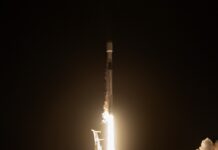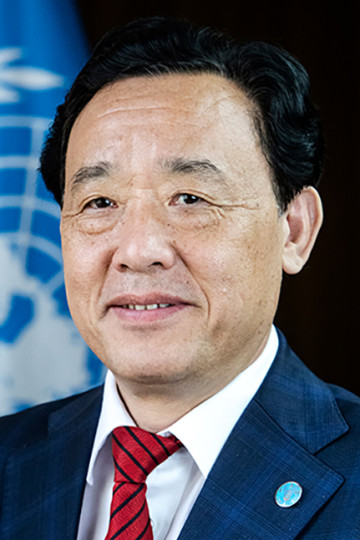—
When Atoms Help Reduce Hunger and Poverty
The United Nations’ Food and Agriculture Organization (FAO) and the International Atomic Energy Agency (IAEA) have been collaborating for over 60 years to develop and apply nuclear technologies in food and agriculture. Their latest joint initiative, Atoms4Food, aims to bolster research and development efforts to help eliminate hunger and poverty on a global scale.
Addressing Global Agricultural Challenges
Agricultural systems today face immense pressure to feed a growing population while also dealing with issues such as environmental degradation, biodiversity loss, pollution, and climate change. These problems are further exacerbated by socio-economic factors like food demand, persistent poverty levels, and conflicts. In 2023, between 713 and 755 million people suffered from hunger, and billions more could not afford a healthy diet.
Amid these complex challenges, the FAO and IAEA have set ambitious goals and strengthened their partnership to enable countries to leverage nuclear, isotopic, and related technologies. These innovative methods can make agriculture and livestock more productive, manage natural resources better, reduce food waste, ensure food safety, improve nutrition, and help vulnerable food-producing communities adapt to the effects of climate change.
Expanding the Use of Nuclear Techniques
Since the establishment of the Joint FAO/IAEA Centre of Nuclear Techniques in Food and Agriculture in 1964, nuclear applications in agriculture have significantly expanded and benefited the entire planet.
Key Achievements:
- Improving Crop Production: Techniques leveraging isotopes optimize water and nutrient absorption by plants, and irradiation methods create higher-yielding, more resilient, and better-quality crop varieties. Millions of hectares of crops developed through mutation breeding provide substantial financial returns to farmers while protecting their land and preserving the environment.
- Pest Control: Sterile insect release programs effectively manage pest populations, including fruit flies, moths, tsetse flies, and screwworms. These programs have created pest-free or low-prevalence areas from South America to the Middle East, saving hundreds of millions of dollars by reducing production losses, enhancing food quality, boosting exports, creating jobs, and generating income.
- Environmental Protection: Isotope techniques help minimize soil degradation and water pollution while improving soil fertility. They identify critical factors such as optimal fertilizer application locations and timings, resulting in annual fertilizer savings of at least $6 billion.
- Animal Health and Productivity: Vaccines developed using irradiation and molecular techniques for rapid pathogen detection improve animal health and productivity. These advancements also enhance food safety by using irradiation methods to eliminate bacteria, insects, and other organisms, providing socio-economic and environmental benefits to humans, animals, plants, and ecosystems.
Atoms4Food Initiative
Under the Atoms4Food initiative, a comprehensive strategy involving country assessments and a solid action plan has been established to help countries envision a better future through the FAO’s "four improvements":
- Improved production
- Improved nutrition
- Improved environment
- Improved living conditions
Accelerating Change
The FAO/IAEA partnership has been instrumental in mobilizing funds and implementing initiatives. This unique R&D partnership provides proven scientific solutions that have positively impacted the transformation of agri-food systems. Given the complex and overlapping challenges we face today, collaborative efforts must be intensified. In October 2023, the FAO and IAEA launched the Atoms4Food initiative, designed to offer countries innovative solutions tailored to their specific needs. The initiative provides better access to scientific data and expertise to inform policy development, strengthen R&D activities, promote the adoption and standardization of nuclear techniques, enhance technical and management capacities, increase knowledge exchange, and foster collaboration.
The FAO/IAEA partnership is guided by principles such as equitable access to innovations for smallholder farmers and underrepresented groups, gender equality, country ownership, the "One Health" approach, and sharing information about the risks and benefits of new technologies. For innovations to be adopted, their added value must be confirmed, and nuclear applications must prove beneficial and widely usable at regional or global levels.
Services Provided by the Joint FAO/IAEA Centre
The Atoms4Food initiative builds on nearly 60 years of experience jointly acquired by the IAEA and FAO in helping countries use nuclear and isotopic technological solutions. The Joint FAO/IAEA Centre advances and supports the safe and proper use of nuclear and related technologies in food and agriculture, offering the following services:
- Assessment Missions: Identify food security needs and develop tailored plans to address food security challenges.
- Plant Breeding Improvement Service: Develop crop improvement programs using nuclear mutation breeding to create more resilient and nutritious crops.
- Soil and Water Management and Plant Nutrition Service: Utilize nuclear and isotopic science to gather information on soil fertility, key crops and their average yields, fertilizer availability, and irrigation systems.
- Animal Production and Health Service: Provide scientific assessments of the epidemiological situation regarding animal diseases and interventions for prevention, diagnosis, and control, as well as laboratory capabilities and other veterinary services.
- Insect Pest Control Service: Use the sterile insect technique (SIT) involving nuclear methods to address insect pests that harm agricultural production.
- Food Safety and Control Service: Evaluate laboratory capacities, ability to monitor food safety risks, authenticity, and irradiation applications.
- Public Health and Nutrition Service: Contribute to effective nutritional programs using data on food nutritional value and diet quality collected through stable isotope techniques.
Conclusion
In light of the complex challenges faced by global food and agriculture systems, the FAO and IAEA have set ambitious goals and strengthened their partnership to enable countries to leverage nuclear, isotopic, and related technologies for more efficient, inclusive, resilient, and sustainable agri-food systems. The Atoms4Food initiative represents a significant step towards achieving these goals, providing innovative solutions, data, and expertise to help countries build a better future.
For more information, you can visit the IAEA website.
For more Information, Refer to this article.


































